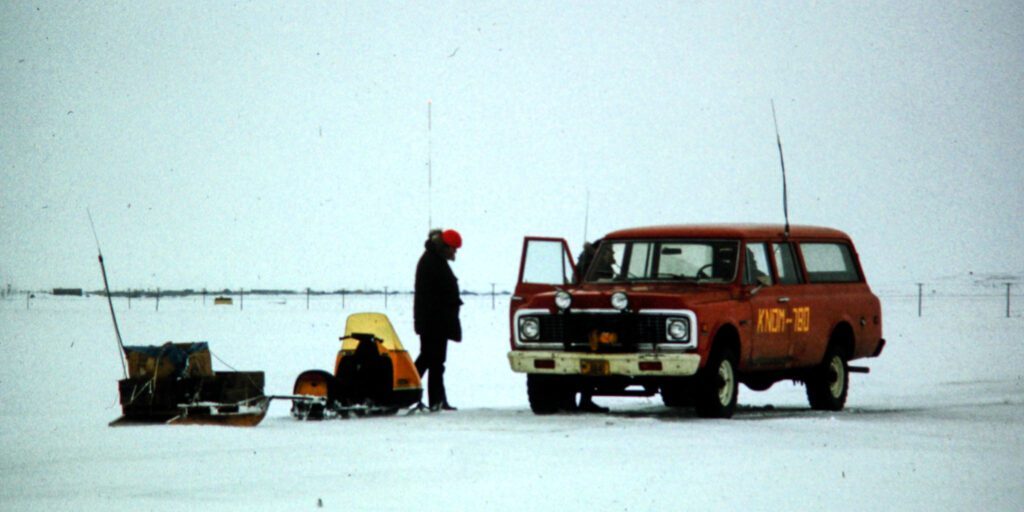As national attention has been turned to Olympic achievements and football sports fans in Alaska listen for the sounds of excited dogs, machines, and racers.
For decades, KNOM’s flagship race updates has offered a front row seat, for fans to keep close tabs on their favorite human and canine athletes. After two years of races canceled and strict isolation precautions to keep the villages safe, the 2022 race season is a happy taste of “normal” for many listeners.
This year’s events started with live daily updates from a race close to home. In the Kuskokwim 300, dogs run on the ice-covered Kuskokwim river from “Bethel to Aniak and back”. This year, Bethel musher Pete Kaiser brought home his sixth title. At the mid-way point, race drama captivated listeners as a windstorm made one team of disoriented dogs turn around.
Longtime listeners may have recognized a familiar voice on the air, as Dr. Paul Korchin, former news director and current KNOM board member, called in live from his home in Aniak. His entertaining updates added hometown flare to the latest race developments.
A week later, the station partnered with KUAC in Fairbanks to cover the Yukon Quest. The famously difficult race crosses several mountain passes, with little race support. The route, from Fairbanks to Whitehorse, Canada, was historically used for mail delivery and travel during the Klondike gold rush.
Some races are dog-powered, others rely on horsepower. As Nome’s sea ice marks the halfway point for the Iron Dog snowmachine race, KNOMers get to practice live reporting as racers zoom into the checkpoint at lightning speeds. Later, reporters provide in-depth analysis of tactics while racers wrench their rigs in the local shop. This year’s route, from Big Lake to Nome and back with a loop north through Kotzebue, has a total mileage of 2,465 miles in seven days. Later in the spring, it’s Norton Sound racers’ turn, with a quick snowmachine race from Nome to Golovin and back.
Speaking of the Iditarod, 2022 marks the golden anniversary for the famous race. The changing pandemic guidance and, likely, fewer stops in the small villages along the way, is expected to shake things up for mushers and dogs – and the reporters who follow their trail.
Image at top: A KNOMer stands by the ‘spotter’, the station vehicle used to sight incoming dog teams as they push through the last checkpoint before the finish line in Nome, some time in the late 1970s. The equipment on the road is headed on a snowmachine trip to the roadhouse at Safety. In KNOM’s earlier days, remote broadcasts would catch mushers there as they approach the finish line in Nome.






